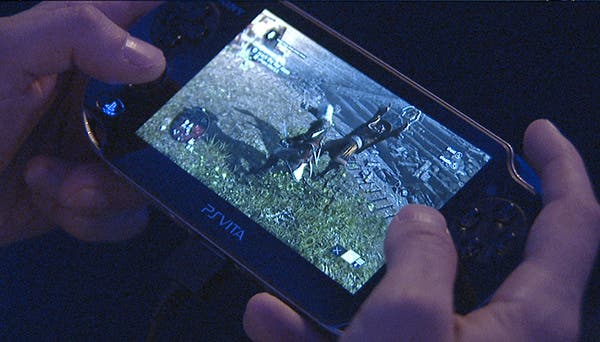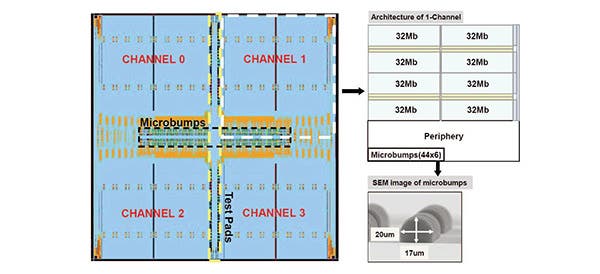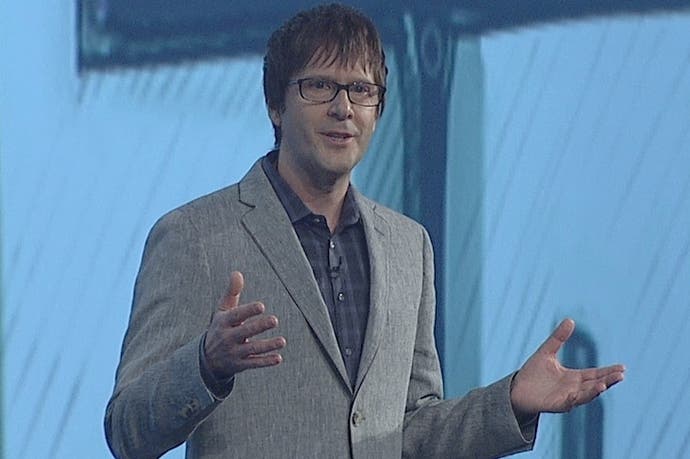Mark Cerny: lead architect of... PlayStation Vita?
PS4 design chief also responsible for Sony's handheld.
PlayStation 4 lead architect Mark Cerny carried out the same role in the development of PlayStation Vita, Digital Foundry can reveal. Cerny's involvement in the creation of Sony's handheld hasn't been discussed publicly by the platform holder, but his key involvement in the project is now a matter of record.
It's an interesting revelation bearing in mind that Mark Cerny himself has made no mention of this major project in his many public presentations, which have been couched in very personal terms. The established narrative of his direct involvement in the development of PlayStation hardware begins with his holiday research into the x86 architecture and its potential for powering next-gen gaming hardware - research that led to him pitching Shuhei Yoshida to lead the development effort that culminates later this year with the release of PlayStation 4. Multiple sources close to Sony told us that Cerny's involvement was equally pivotal in the creation of Vita.
At Gamescom, Cerny himself wasn't available for interview, but Eurogamer asked Yoshida about the architect's involvement in the genesis of the handheld:
"Yes, he worked on it," the Sony Worldwide Studios boss replied. "I don't think we called him a chief system architect for the Vita, but he was heavily involved in the core development of the Vita."
This week in Tokyo, as Mark Cerny showcased Knack to the press, Eurogamer asked him directly about his involvement in the creation of PlayStation Vita, factoring in that both the handheld and PlayStation 4 would have been developed by the same teams simultaneously.
"With both pieces of Sony hardware developed in parallel, Mark Cerny and Shuhei Yoshida aimed to tie the hardware together - Remote Play was the concept that made it to the PS4 launch."

"I had the same role on Vita," he replied.
As lead architect?
"Yes."
Our understanding is that work commenced on both projects in 2008. In terms of hardware design, liaising with key technology suppliers like ARM (CPU) and Imagination Technologies (graphics), not to mention directing the internal R&D teams responsible for the development toolchain, we're told that it was Cerny who took point - just as he did on PlayStation 4.
SCE did a remarkable job in keeping its PS4 development under the radar for several years, but first data on the technological make-up of "PSP2"- as it was then known - began to leak in 2009 - specifically the choice of the PowerVR SGX543 in quad-core configuration.
It was to be our first public indication of a major shift in hardware design philosophy at SCE - a new path that Cerny takes credit for. The complex, custom hardware designs pioneered in the Ken Kutaragi era - powerful in application, but difficult to work with - were jettisoned in favour of licensed parts, with SCE's focus geared towards customisations with console game creation in mind, along with creating best-in-class development tools.
A deep-dive look at the PlayStation Vita's integrated processor, or SoC (system on chip) reveals the form that some of these hardware customisations take. X-ray photography of the chip suggests that while Vita may be utilising "off-the-shelf" tech like a quad-core configuration of the ARM Cortex A9 and the PowerVR graphics, an enhanced Samsung memory manager offers up 12.8GB/s of bandwidth - around four times that of the traditional LPDDR2 that shipped in other mobile devices that shipped around the same time as the launch of the Vita. We also know that the PowerVR GPU received some modest enhancements, such as support for texture formats more commonly used in game development.
"If the PlayStation 4 is based on the concept of 'super-charged PC architecture', Vita is very much the mobile equivalent."

Again there are clear parallels with PS4 - if the new console is based on the concept of "super-charged PC architecture", Vita is very much the mobile equivalent.
With the same guiding mind working on both products simultaneously, and with both projects also guided by "the man with the masterplan" - Shuhei Yoshida - we wondered whether the two machines were planned to work together symbiotically right from the beginning.
"That was definitely always a goal, the question was how could we accomplish that? [It was stumbling upon the idea of] Remote Play when we realised we could use that to tie it all together and create a family-friendly strength for PlayStation 4. We had to," Cerny recalled.
"Shuhei Yoshida and I ended up both pitching that feature on the same day. It was an amazing coincidence. We had both come to the same conclusions that the affinity for the two platforms to work together was so large that it just made sense."
So is there more in common between PS4 and Vita than we already know about? Beyond the similarities in design philosophy, has Sony been working on actual gameplay features that will bring the two platforms closer together?
There's a long pause before Cerny eventually replies, saying that they "considered quite a few concepts during development", but that Remote Play is "mostly what you're seeing... in the final build."
Additional reporting by Tom Phillips and Martin Robinson.

